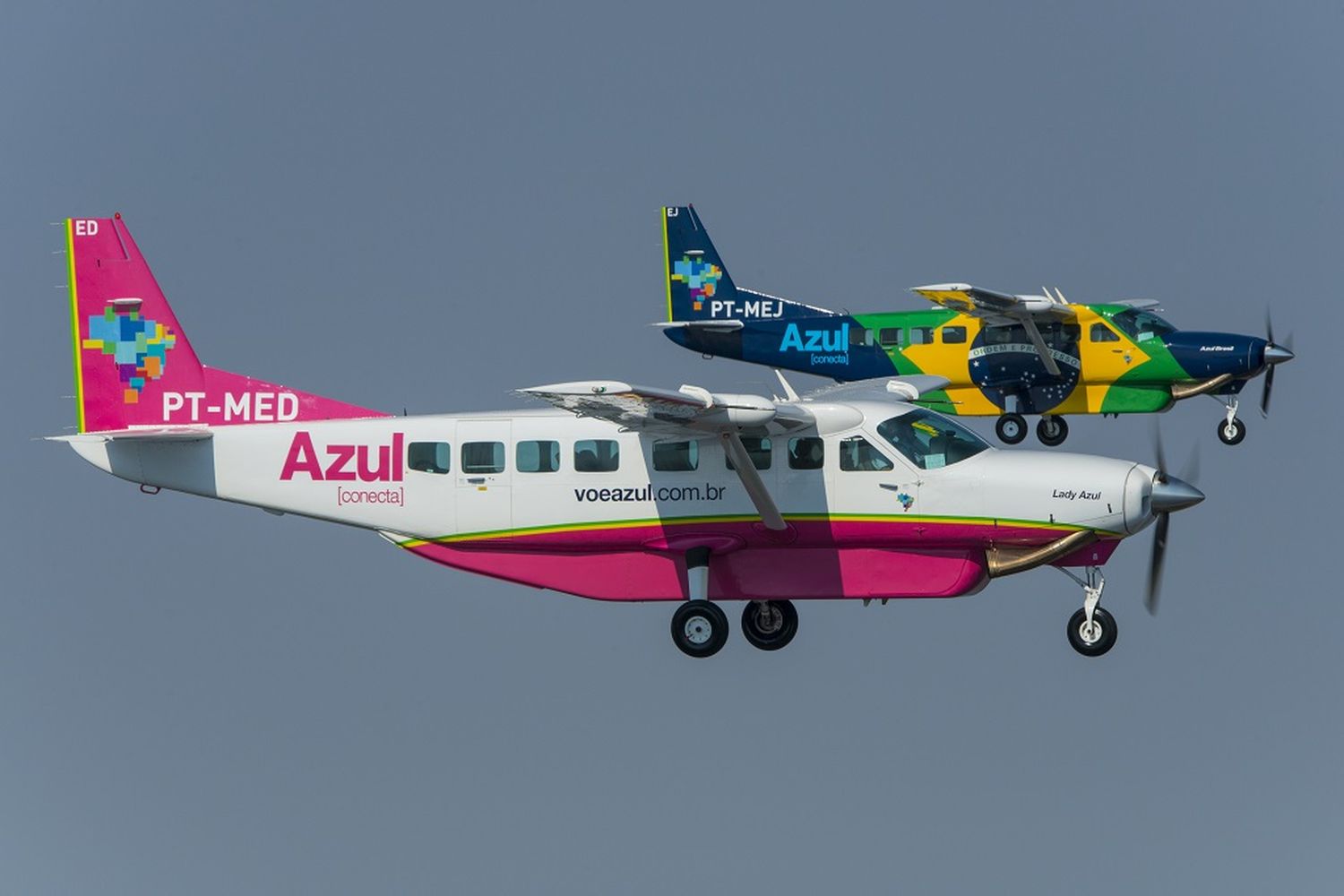Ampaire Eco Caravan: Azul Conecta wants to convert six aircraft into hybrid-electric planes
American company Ampaire, a developer of electric and hybrid propulsion solutions for aviation, announced last Tuesday that Brazilian regional airline Azul Conecta, a subsidiary of Azul Linhas Aéreas, has signed a letter of intent to convert six of its Cessna Grand Caravan into hybrid-electric aircraft.
The Eco Caravan, the first commercial product developed by Ampaire, is a hybrid-powered variant developed from the popular Cessna Grand Caravan. The adaptation retains the range and payload capacity of the original model. Last November, the prototype completed its first flight.
The conversion will include the installation of the AMP-H570 hybrid-electric powertrain and battery pack required for its operation.
«Azul ordered upgrade kits for its Caravan fleet because it sees the hybrid-electric solution as the fastest way to deploy sustainable technologies, benefiting passengers and the environment», Ampaire said in a press release.
«After evaluating a range of technologies, including fully-electric and hydrogen fuel cells, we concluded that Ampaire moves us toward our ESG goals much sooner», said Flavio Costa, CEO of Azul Conecta.
Costa also remarked that the airline will work together with the developer to advance the installation of charging infrastructures at all Azul Conecta hubs, as well as in other airports. In addition, he said the Brazilian carrier will also provide services to other Eco Caravan operators in South America.
«We are thrilled to work with the visionary team at Azul Conecta», said Kevin Noertker, CEO of Ampaire. «They are among a group of established air carriers ready to embrace a hybrid-electric solution, providing leadership for an entire industry», he added.
Eco Caravan main features
As reported by the developer, the Eco Caravan can carry up to nine passengers and has a range of up to 800 miles (1.287 kilometres). In addition, it can carry up to 2.500 pounds (1.133 kilograms) of payload.
Compared to the original Cessna Grand Caravan, the hybrid version consumes up to 70% less fuel on short trips and up to 50% less on longer routes. Consequently, it enables a considerable reduction of carbon dioxide emissions into the atmosphere. Operating with sustainable aviation fuel (SAF) reduces emissions by up to 90%, according to Ampaire.
Moreover, the overall reduction in operating costs is between 25% and 40% compared to the original model, depending on the route.
The new turboprop version became the first hybrid aircraft to enter the United States Federal Aviation Administration (FAA) Supplemental Type Certification (STC) process. Ampaire expects to obtain all necessary approvals in 2024.
See also: Ampaire’s Eco Caravan made its first flight using its hybrid-electric propulsion system


Comentarios
Para comentar, debés estar registrado
Por favor, iniciá sesión